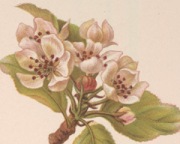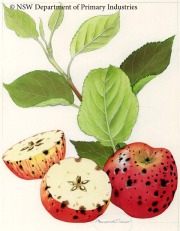Today is an adventure. One of my best friends from Bar Harbor and I have decided to stay here over winter break and cook our own Thanksgiving dinner. This is the first time either of us has a) been away from family for Thanksgiving, b) had to cook the holiday dinner by ourselves, and c) been in Bar Harbor this long without any other students around. We are scared and confused.
It doesn’t help that I find cooking rather distasteful when I’m not either fully in charge or completely uninvolved. The mere act of peeling a potato makes me so full of rage it is unhealthy. I don’t know why. So today my friend and I plunge into the depths of the holiday culinary arts with recipes from my mom and a bottle of Irish whisky.
And funnily enough, I am not making pie this Thanksgiving. Turns out, my friend doesn’t really like pie and I filled up on it last week by gorging myself at a pie contest, so we are substituting homemade ice cream.
So because I am not making pie I am going to explore pie. Another thanks to the students from the apples history class for a lot of this information. I don’t want to use their real names on the internet, so I’ll say thank you to Saggie and Maras for all the really cool information you found out about cooking with apples.
Personally I usually think of apple pie as a fall affair, after fattening dinners, most of the time a special occasion like Thanksgiving or Christmas dinner. When my family makes an apple pie, it lasts for almost a week. And then I come home after dreaming about the last piece of pie all day to find that my dad has eaten it out from under me, inappropriately lacking sympathy or regret or shame. But pies for us aren’t something that you make everyday. Apple pie in particular is something restricted to autumn because you simply can’t make a real apple pie with anything other than fresh fruit.
Happily, pie used to be a year round, breakfast through supper sort of deal. It was made from dried apples, boiled apple cider and fresh fruit late summer through early spring. Apple pie was a breakfast dish, an afternoon snack and a sweet dessert. Usually when pie was made from fresh apples, they were stewed before baked in the crust, creating more of an applesauce filling and not the neat slices we are used to today. Dried apples were simply rehydrated, also giving the pie a different consistency. It seems like it would be easier to make a pie with stewed apples instead of carefully slicing and layering in the crust. And also easier to shovel into your mouth. I like that part.
Boiled apple cider pie is a different story. [I have to put a disclaimer on this: I am a big consistency and texture person. I cannot eat food that moves on its own. I hate pudding and jello. I hate any food that slides down my throat in a big gooey chunk. It is like eating a slug. I don’t do it. Which means I do not like boiled cider pie. Saggie and Maras made a wonderful cider pie, but I have relegated it into the group of foods I cannot eat because of the jello factor. But that should not stop anyone from trying the pie. I’m sure lots of people like it.] Boiled cider is sweetened cider boiled down to between 1/3 and 1/7 of its original volume, creating a sweet apple syrup. The pie simply the cider, eggs, milk, maple syrup or sugar, and flour. Interesting and something I had never heard of before this fall.
Boiled cider and dried apple pie were on the table when fresh apple pie could not be had. But eighteenth and nineteenth century housewives in New England weren’t in the kitchen making a pie a day. First of all, that would just be annoying. Second, normal ovens from that period were huge and built to hold up to twelve pies; baking depended on a limited amount of wood or coal and was not as simple as turning the gas or electricity on. If you were going to heat the oven up, you might as well cook twenty or so pies in one go so you don’t have to waste more time and fuel later. And not all these pies were sweet apple pies. Egg, minced meat, chicken, squash, any kind of fruit was baked into pie form in these giant ovens. This conjures up not only a painfully aromatic image in my head but also a giant storeroom or cellar in which all the shelves are filled with pie. All year round. What a marvelous way to live.
So with that image in mind, here is one of my favorite recipes found by Saggie and Maras for apple pie. Happy Thanksgiving! I will now experiment with cooking a small fowl and pairing it with several different types of wine.
APPLE PIE: It’s not just for Thanksgiving anymore.
Recipe from 1747 in The Art of Cookery (1983) by Hannah Glasse
 Make a good puff paste crust, lay some round the side of the dish, pair and quarter your apples, and take out the cores, lay a row of apples thick, throw in half your sugar you design for your pye, mince a little lemon peel fine, throw over and squeeze a little lemon over them, then a few cloves, here and there one, then the rest of your apples, and the rest of your sugar. You must sweeten your pallet and squeeze a little more lemon; boil the peelings of the apples, and the cores in some fair water, with a blade of mace, till it is very good; strain it and boil the syrup with a little sugar till there is but very little and good, poor it into your pye, and put on your upper crust, and bake it. You may put in a little quince and marmelate, if you please.
Make a good puff paste crust, lay some round the side of the dish, pair and quarter your apples, and take out the cores, lay a row of apples thick, throw in half your sugar you design for your pye, mince a little lemon peel fine, throw over and squeeze a little lemon over them, then a few cloves, here and there one, then the rest of your apples, and the rest of your sugar. You must sweeten your pallet and squeeze a little more lemon; boil the peelings of the apples, and the cores in some fair water, with a blade of mace, till it is very good; strain it and boil the syrup with a little sugar till there is but very little and good, poor it into your pye, and put on your upper crust, and bake it. You may put in a little quince and marmelate, if you please.
And a poem by William King.
Apple Pye (1713)
Of all the delicates which Britons try
To please the palate of delight the eye,
Of all the sev’ral kings of sumptuous far,
There is none that can with applepie compare.
Again, thanks to Saggie and Maras for doing the research I was too lazy to do today and going through all those old cookbooks. Reading old things can be so much fun.















Leave a comment
Comments feed for this article